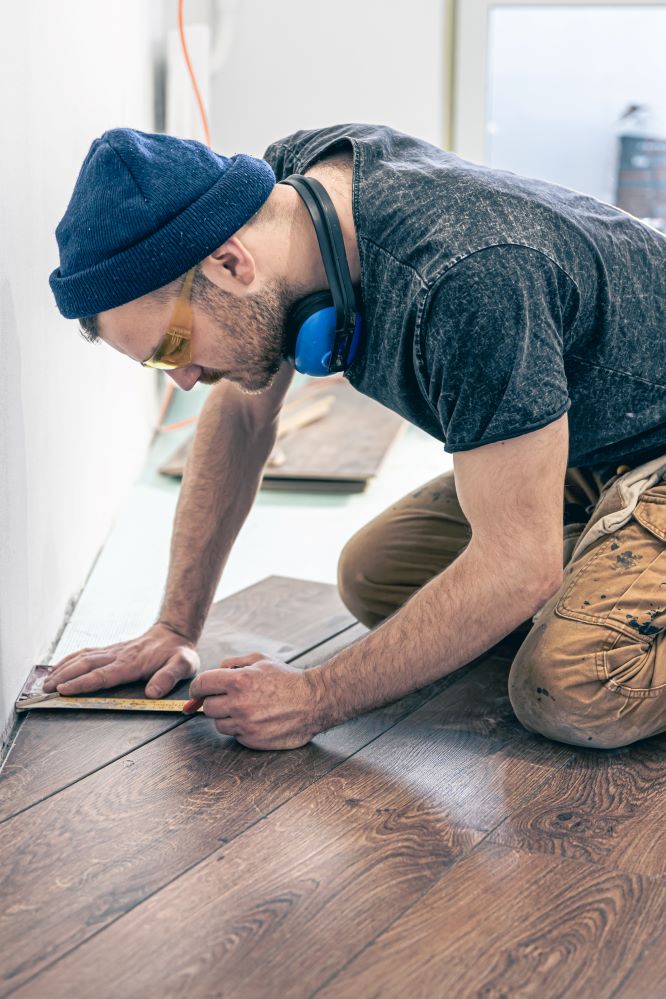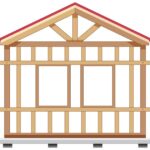When it comes to durable and cost-effective flooring, Vinyl Composition Tile (VTC) is often a top choice for both residential and commercial spaces. Known for its resilience, affordability, and versatility, VTC flooring has become a popular option for high-traffic areas like schools, hospitals, and retail spaces. But what if you have a wood subfloor? The big question arises: Can you install VTC on wood subfloor?
The answer is yes, but it’s not as simple as laying tiles directly onto the wood. Proper preparation of the subfloor is crucial to ensure the tiles adhere well and perform as expected over the years. In this blog, we’ll explore the details of installing VTC on a wood subfloor, covering everything from preparation to maintenance. Whether you’re a DIY enthusiast or planning to hire professionals, this guide will help you make informed decisions.
Understanding VTC Flooring
What Is Vinyl Composition Tile (VTC)?
Vinyl Composition Tile (VTC) is a durable and versatile flooring option made from a combination of vinyl resins, fillers, and pigments. Unlike luxury vinyl tiles (LVT), which are softer and more flexible, VTC is rigid and dense, making it ideal for heavy-duty applications.
Benefits of VTC Flooring
- Durability: VTC is designed to withstand heavy foot traffic, making it perfect for commercial spaces.
- Cost-Effectiveness: It’s one of the most affordable flooring options, offering excellent value for money.
- Design Flexibility: Available in a variety of colors and patterns, VTC can mimic the look of stone, wood, or even ceramic.
- Water Resistance: While VTC is not entirely waterproof, it is highly water-resistant when properly sealed.
- Longevity: With proper installation and maintenance, VTC can last 15-20 years or more.
How Does VTC Compare to Other Flooring Types?
Compared to luxury vinyl tile (LVT), VTC is more rigid and cost-effective but lacks the premium look and feel of LVT. When compared to laminate or hardwood, VTC is more resistant to water and easier to maintain, making it a practical choice for high-moisture environments.
Wood Subfloors as a Base for Flooring
Types of Wood Subfloors
Wood subfloors come in various forms, including:
- Plywood: The most common and reliable type for flooring installations.
- OSB (Oriented Strand Board): A cost-effective alternative to plywood, though less moisture-resistant.
- Particle Board: Not ideal for VTC due to its susceptibility to water damage and lack of strength.
Benefits of Wood Subfloors
- Structural Stability: Wood subfloors provide a solid base for flooring installations.
- Ease of Installation: They’re relatively easy to work with compared to concrete subfloors.
- Flexibility: Wood can accommodate various types of flooring, including VTC, with proper preparation.
Challenges with Wood Subfloors
- Moisture Sensitivity: Wood can expand, contract, or warp when exposed to moisture.
- Uneven Surfaces: Imperfections in the subfloor can cause issues during tile installation.
- Movement: Natural flex and movement of wood can lead to tile cracks if not addressed.
Can You Install VTC on Wood Subfloor?
The Short Answer
Yes, you can install VTC on wood subfloor, but only if the subfloor is properly prepared to meet specific standards. Skipping the preparation process can lead to poor adhesion, uneven tiles, or premature wear.
Manufacturer Recommendations
Leading VTC manufacturers often specify the following conditions for installing tiles over wood subfloors:
- Flatness: The subfloor should be flat within 1/8” over 6 feet.
- Moisture Control: Proper ventilation is required beneath the subfloor to prevent moisture buildup.
- Structural Integrity: The subfloor must be solid, with no loose boards or protruding fasteners.
For more detailed installation standards, you can check the Armstrong Flooring Official VCT Installation Guide visit — a trusted source in the flooring industry.
Preparing Wood Subfloors for VTC
To ensure a successful installation, the following steps are essential:
- Inspection: Check for loose boards, damage, or areas requiring repair.
- Smoothing: Sand or level uneven spots to create a flat surface.
- Moisture Barrier: Install a moisture barrier to protect the wood and tiles.
- Underlayment: Add a layer of 1/4” smooth plywood or luan to provide a stable base.
Proper preparation ensures a smooth, long-lasting installation and helps avoid common issues like warping or adhesive failure.
Preparing a Wood Subfloor for VTC Installation
Step-by-Step Guide
- Inspect and Repair:
- Check the subfloor for damage, loose boards, or protruding nails.
- Replace any damaged sections and secure loose boards with screws.
- Level the Surface:
- Sand down high spots or fill low spots with a leveling compound.
- Use a straightedge to verify the flatness of the subfloor.
- Clean Thoroughly:
- Remove all dust, paint, wax, or adhesive residues.
- Vacuum and wipe down the surface to ensure it’s free of debris.
- Install Underlayment:
- Lay 1/4” plywood or luan over the subfloor, securing it with screws.
- Stagger the seams of the underlayment to avoid alignment with the subfloor seams.
- Seal Gaps and Joints:
- Fill gaps and seams with a wood filler or leveling compound.
- Sand the surface smooth to eliminate imperfections.
- Moisture Control:
- Install a polyethylene moisture barrier under the wood subfloor if moisture is a concern.
- Ensure proper ventilation beneath the subfloor.
Common Mistakes to Avoid
- Using particle board as a subfloor or underlayment.
- Skipping the moisture barrier in high-humidity areas.
- Using the wrong adhesive for VTC installation.
VTC Installation Process on Wood Subfloor
Tools and Materials Needed
- VTC tiles
- Adhesive (as recommended by the manufacturer)
- Notched trowel
- Tile cutter
- Roller
- Measuring tape and chalk line
Step-by-Step Installation
- Plan the Layout:
- Start by marking the centerlines of the room to ensure an even layout.
- Apply Adhesive:
- Spread adhesive with a notched trowel, working in small sections to prevent drying.
- Set the Tiles:
- Press tiles firmly into the adhesive, starting from the center and working outward.
- Avoid aligning tile joints with underlayment seams.
- Roll the Floor:
- Use a roller to ensure proper adhesion and eliminate air bubbles.
- Finishing Touches:
- Trim tiles to fit around edges and obstacles.
- Allow the adhesive to cure as per the manufacturer’s instructions.
Advantages of Installing VTC on Wood Subfloor
- Durability: The combination of a solid wood base and VTC creates a robust flooring system.
- Cost-Effective: Both VTC and wood subfloors are budget-friendly options.
- Noise Reduction: Wood subfloors absorb impact and reduce noise.
- Water Resistance: Proper moisture control extends the lifespan of the flooring.
- Aesthetic Appeal: VTC offers a wide range of design options.
Maintenance and Care for VTC on Wood Subfloor
- Routine Cleaning:
- Sweep or vacuum regularly to remove dirt and debris.
- Mop with a damp cloth and a pH-neutral cleaner.
- Preventive Measures:
- Use mats at entryways to reduce dirt and moisture.
- Avoid dragging heavy furniture across the floor.
- Repairs and Replacements:
- Replace damaged tiles promptly to prevent further issues.
- Call professionals for extensive repairs.
- Professional Maintenance:
- Schedule periodic deep cleaning or resealing for high-traffic areas.
Common Questions and Myths About Installing VTC on Wood Subfloors
Myth: VTC Cannot Be Installed on Wood Subfloors
Fact: VTC can be installed on wood subfloors with proper preparation and underlayment.
Myth: Wood Subfloors Cause VTC to Warp
Fact: Moisture is the real culprit. A moisture barrier and proper ventilation solve this issue.
Myth: Adhesives Won’t Stick to Wood
Fact: Modern adhesives are designed to bond with wood surfaces effectively.
Conclusion
So, can you install VTC on wood subfloor? Absolutely—provided the subfloor is properly prepared. From inspection and repair to underlayment installation and adhesive application, every step plays a crucial role in ensuring a successful installation. When done correctly, VTC on a wood subfloor offers a durable, cost-effective, and visually appealing flooring solution.
If you’re unsure about tackling the project yourself, don’t hesitate to reach out to a flooring professional. Proper installation is key to maximizing the lifespan and performance of your VTC flooring.



